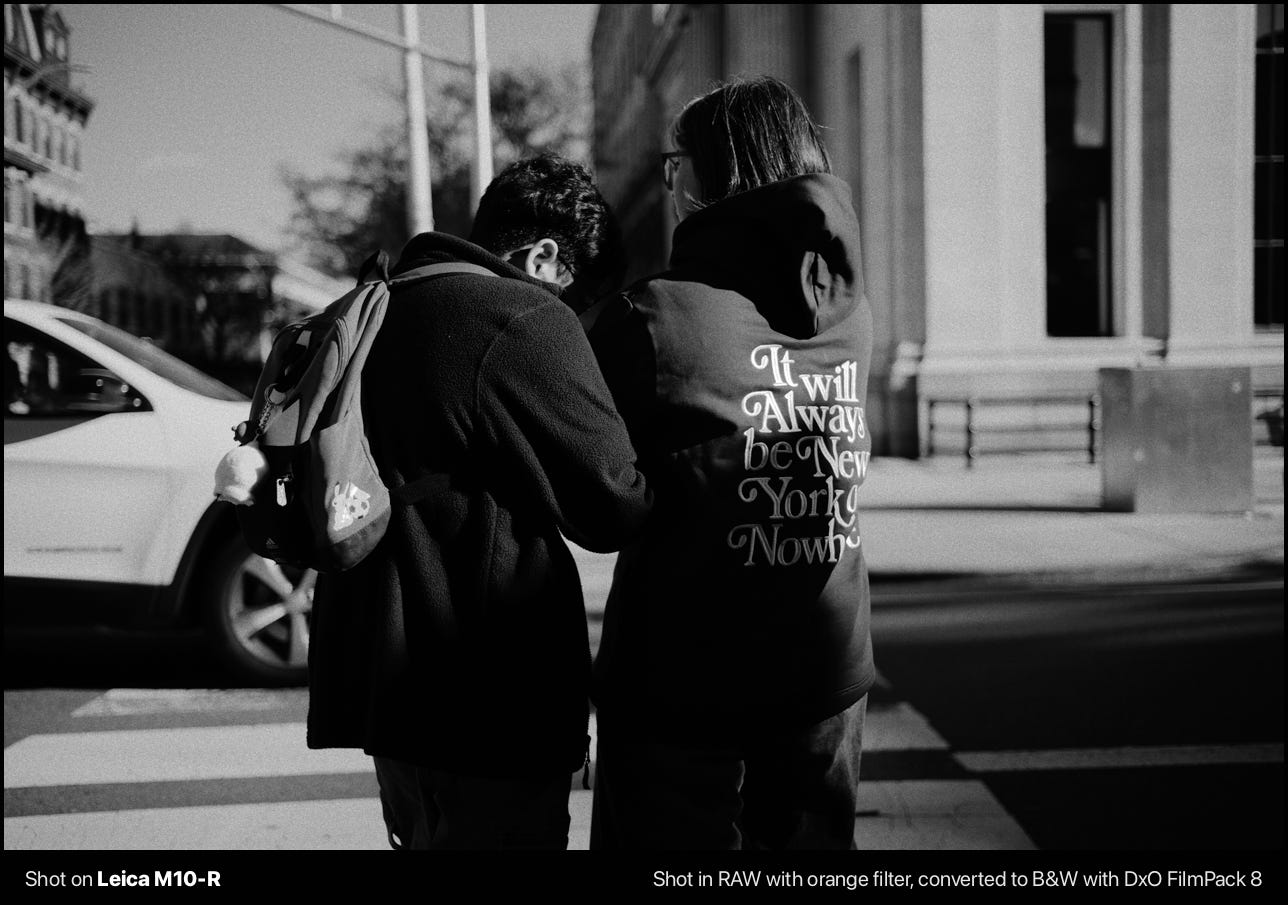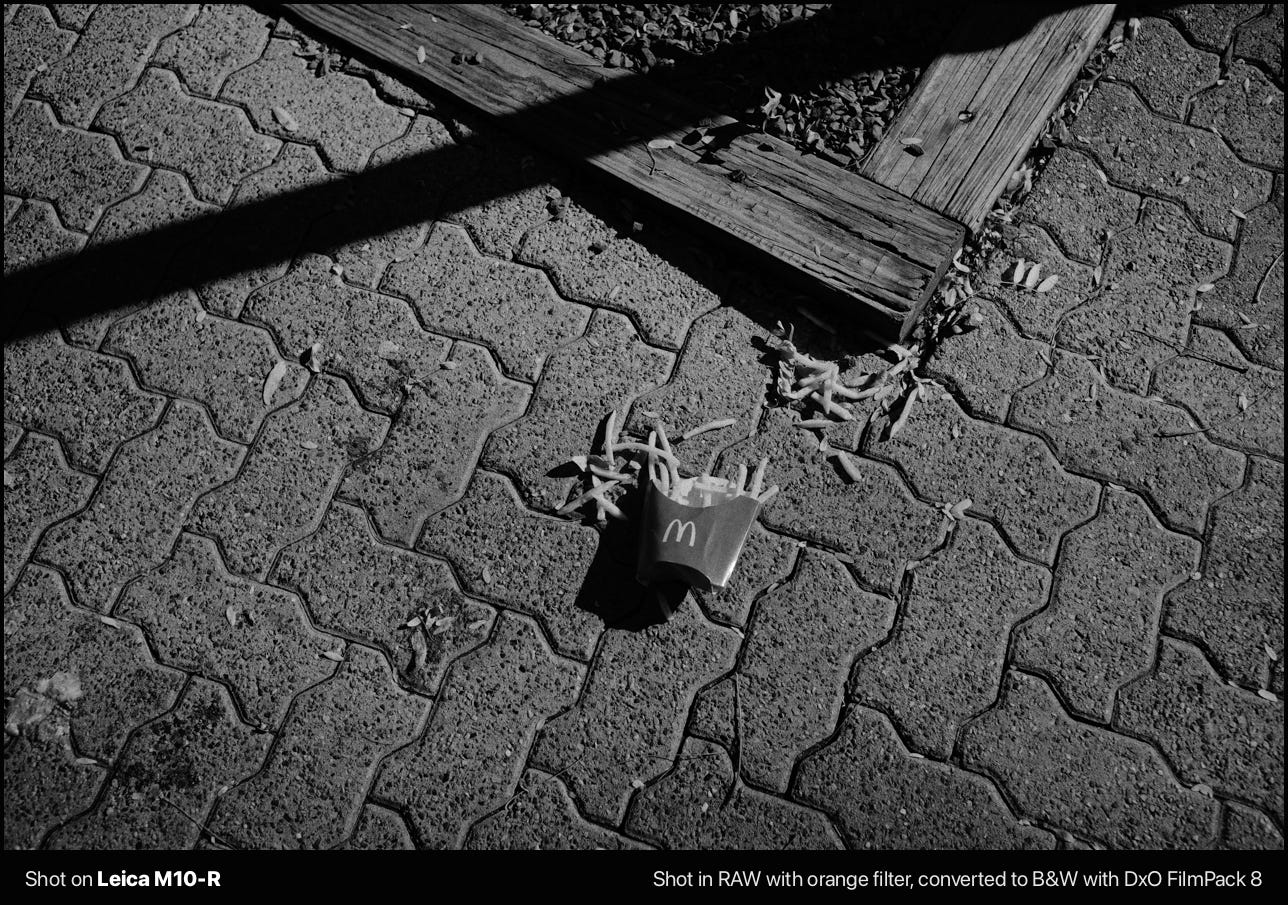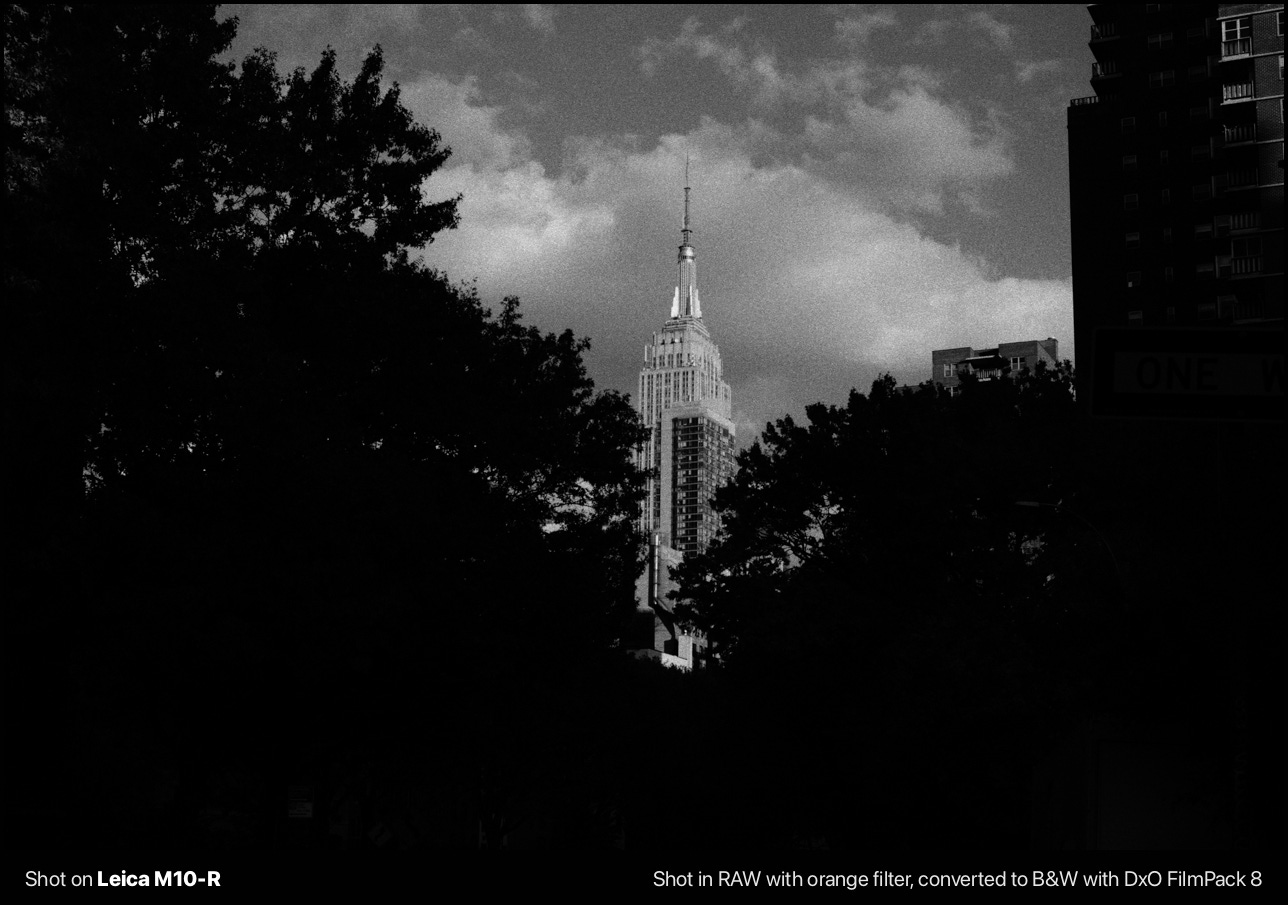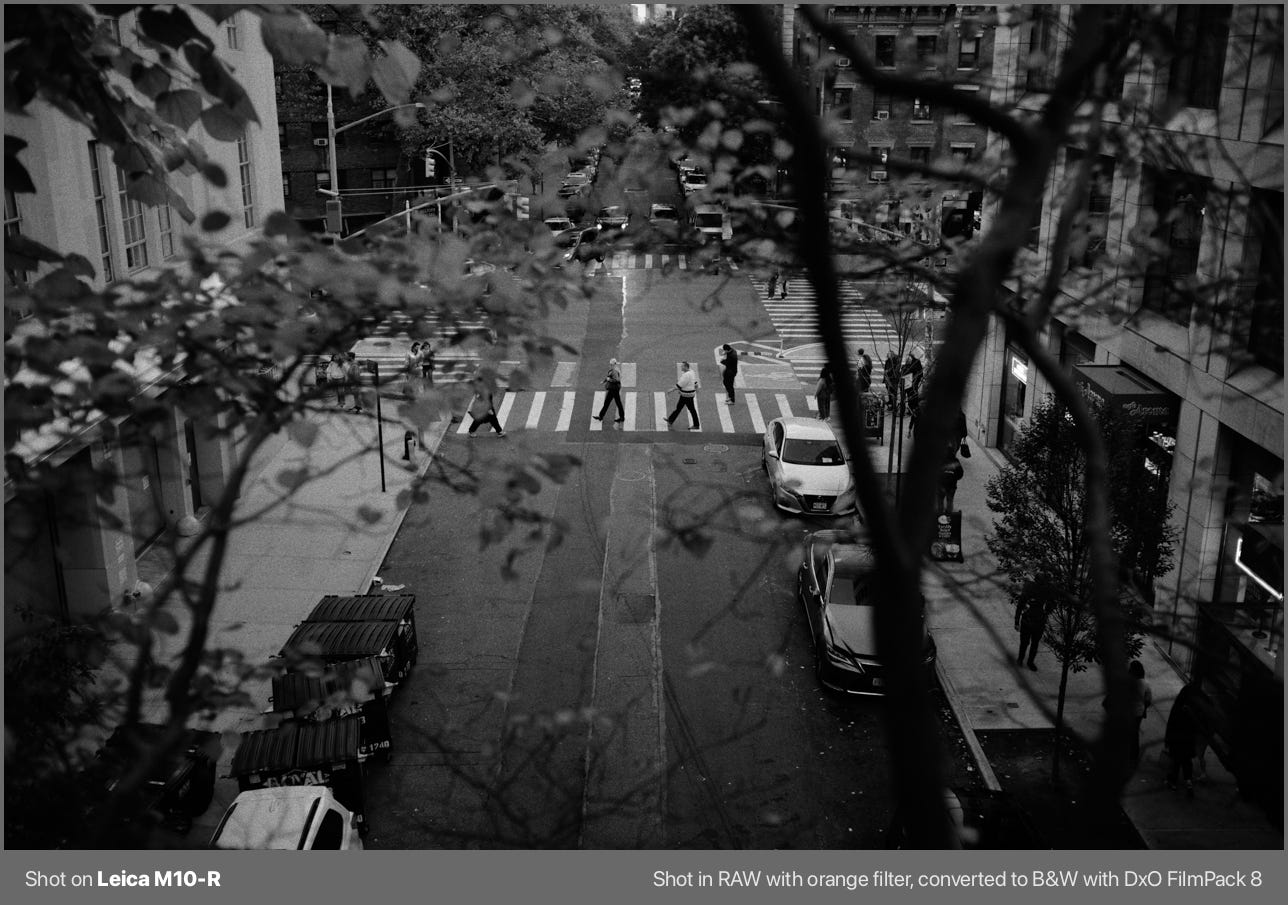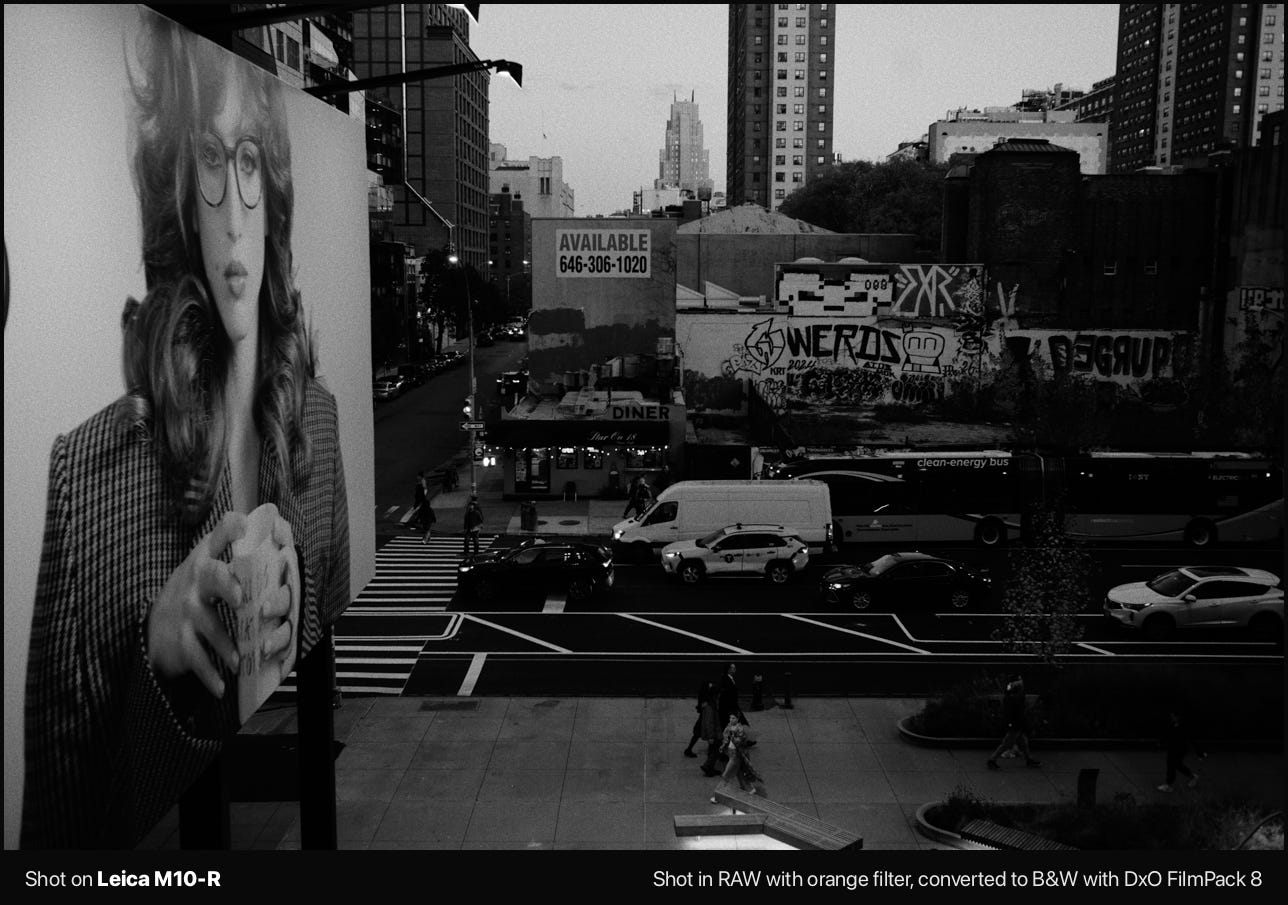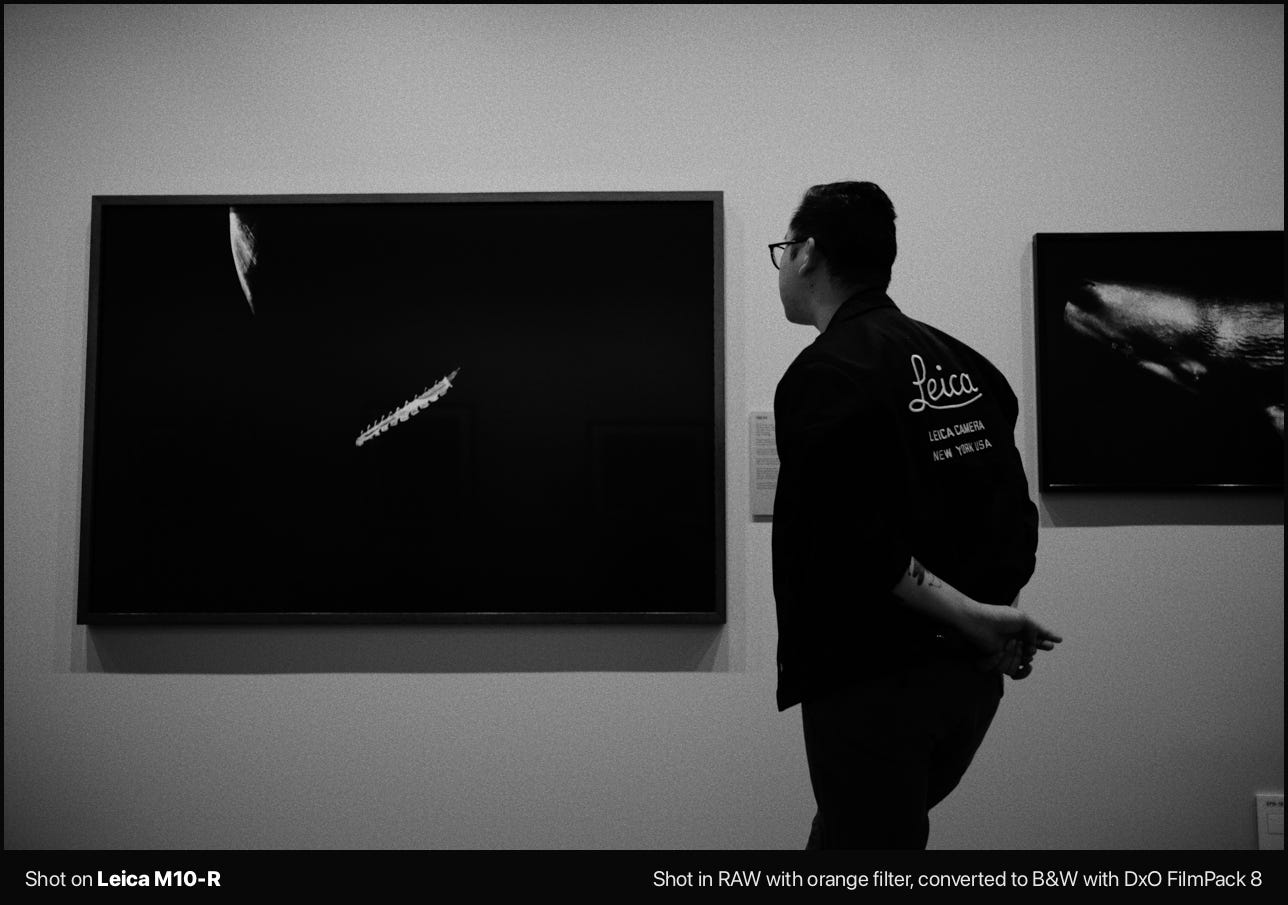You will want to get an orange filter for black and white photography
Why physical filters results in better graysale rendering when compared to software presets that do filter emulation.
For years, I dismissed the appeal of filters. Upon my ignorance, they seemed like a lazy shortcut, something photographers used when they didn’t know how to process an image properly. Then I got an orange one from B+W, screwed it onto my lens, shot black and white shit, and everything changed.
Filters like that do pair really well with rangefinder film cameras (rather than SLRs), because it lets the filter and the lens do the thing, while you look (and focus) through a separated, clean channel (rangefinder).
Without a filter, you’re capturing the full blue channel. When you capture in color and further convert to black and white later using any editing software, you’re remapping that existing data, which may result in unwanted artifacts.
What these Lightroom presets do is to aggressively play with color channels in order to reduce the blue channel to darken the sky. The problem is that when you do that, you’re compressing tonal information that was never constrained during capture. With 8-bit files, you have 256 levels per channel, and this aggressive channel adjustments throw away tonal steps, creating visible banding in smooth areas like skies.
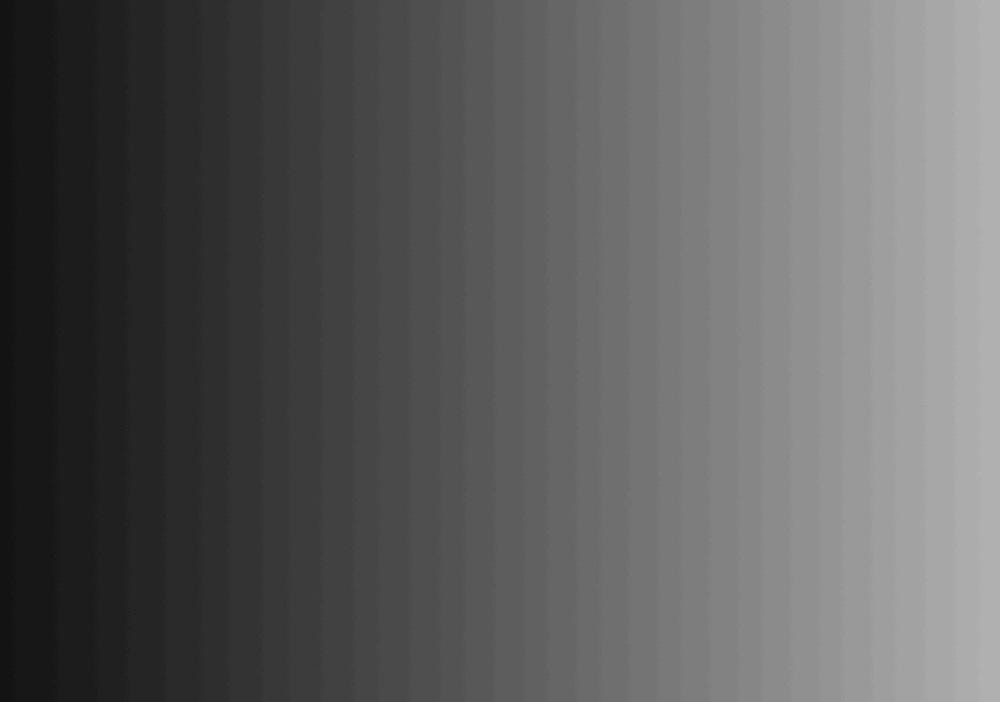
The physical filter ensures that rich tonal information exists across your entire dynamic range from the start. No post-processing recovers data that was never recorded, just a usual black and white conversion. And if you're using film, that's chef's kiss!
What I like doing is shooting in RAW with the filter, and then use DxO FilmPack 8 for a Kodak Tri-X conversion, here are some results.
The trade-off: losing light
An orange filter has a filter factor of 4, which means roughly 2 stops of light loss. On a bright day with fast film, you absorb that stop easily. Early morning, late afternoon, or indoors: you’re choosing between wider apertures, slower shutter speeds, or higher ISO. During the night? You need a Leica Monochrom to crank up the ISO and be happy with it :P
Leica Monochrom: why B&W digital cameras are awesome
When most photographers hear about the Leica Monochrom cameras, they assume Leica simply disabled color processing in software. They imagine a standard color sensor with software b&w conversion applied at the firmware level. This misconception couldn’t be further from the truth, and my real test with both cameras proved just how different these two tech…
When using an orange filter, software conversions have no penalty. You shoot at your normal exposure and apply any look afterward.
Filter or software?
I recommend using a physical filter when you’re shooting in good light and want the tonal decision locked in at capture. No banding artifacts. Consistent conversions every time. If you have a mirrorless camera, you can preview the results in real time, which is dope.
Use software when light is limited and every stop matters, or when you want to experiment with multiple looks from the same RAW file. It works perfectly well. You get beautiful results.
The difference is subtle. For landscape and street photography with fast film in daylight, the filter usually wins. For controlled situations where you’re pushing your limits, software handles it fine.




